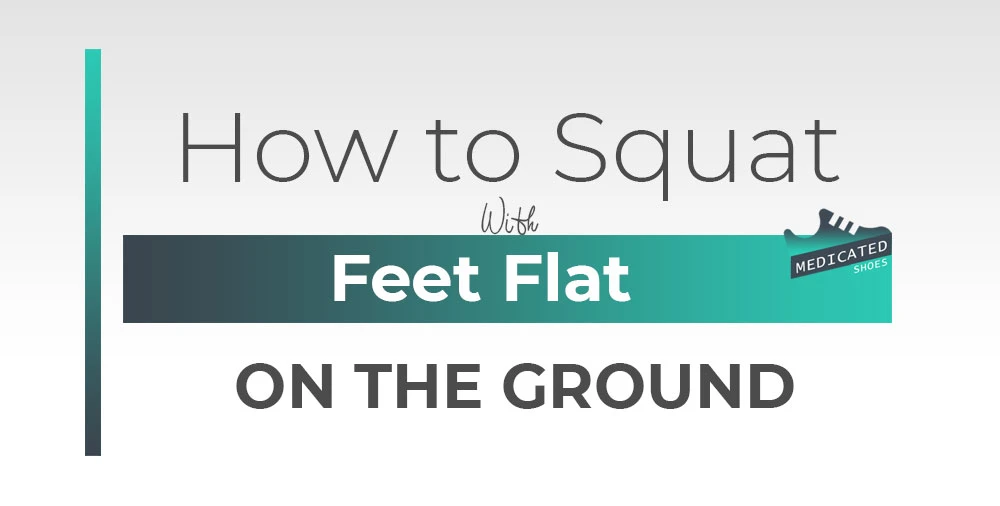Squatting is a natural and functional movement that improves strength, mobility, and posture. However, many people struggle to squat with their feet flat on the ground because of tightness, weakness, or poor balance.
In this blog post, we will explain why squatting with feet flat is beneficial, some common challenges and how to overcome them, and how to perform a proper squat with feet flat on the ground.
How to Squat with Feet Flat On the Ground
Squatting with feet flat on the ground is a movement that requires good mobility and stability in several parts of the body, including your ankles, knees, and hips. Here’s how you can effectively perform it:
- Hip Mobility: Before you begin, ensure your hip mobility is adequate. You can increase hip mobility by doing leg swings, hip circles, and deep lunges.
- Proper Positioning: Stand with your feet shoulder-width apart. If it’s more comfortable, your feet should be parallel or turned out a bit. This is your starting position.
- Begin the Movement: Bend your hips and knees simultaneously, keeping your heels on the ground. Your hips should be moving backward while your knees are bending forward. The goal is to keep your torso upright, but a bit of forward lean is acceptable.
- Knees and Toes Alignment: Make sure your knees track over your toes during the descent. This helps to keep your balance, protects your knees, and allows your hips to move in their natural range of motion.
- Depth: Squat down as far as possible while maintaining your balance and keeping your feet flat. This may not be easy initially, but your depth should improve as your mobility improves.
- Push Up: Push back up, driving through your heels. Keep your body tight, and don’t let your knees cave inward as you rise.
- Breathing: Breathe in as you lower your body and breathe out as you rise back up.
Remember, it’s essential to warm up your body before doing squats and cool down afterward. Performing squats with feet flat on the ground requires good mobility and strength, which can take time to develop. Don’t be discouraged if it’s challenging at first, and consider working with a physical therapist or trainer to ensure you’re using the correct form.
Why Squat with Feet Flat?
Squatting with feet flat on the ground has many advantages over squatting with heels raised, or toes pointed out. Some of them are:
- It improves your ankle mobility and stability, preventing injuries and enhancing your performance in other activities.
- It activates your glutes and hamstrings more which can help you build stronger and more balanced legs.
- It aligns your knees and hips better, reducing stress on your joints and improving your posture.
- It mimics the natural resting position of many cultures, which can help you relax and decompress your spine.
What are Some Common Challenges?
Squatting with feet flat on the ground can be challenging for many people, especially if they are not used to it. Some of the common reasons why people have difficulty with this movement are:
- They have tight calves, Achilles tendons, or ankles, which limit their range of motion and prevent them from lowering their heels to the ground.
- They have weak glutes, hamstrings, or core muscles, which make them rely on their quads and lower back to squat, causing them to lean forward and lose balance.
- They have poor proprioception or body awareness which makes them unable to control their knees and hips and keep them aligned with their feet.
How to Overcome Them?
If you want to squat with feet flat on the ground, you must address these challenges and improve your mobility, strength, and coordination. Here are some tips and exercises that can help you achieve that:
- Stretch your calves, Achilles tendons, and ankles regularly. You can use a foam roller, a lacrosse ball, or a resistance band to massage and loosen up these areas. You can also do dynamic stretches like ankle circles, heel raises, or toe taps before squatting.
- Strengthen your glutes, hamstrings, and core muscles. You can do exercises like bridges, hip thrusts, deadlifts, or planks to activate and build these muscles. You can also do squats with a band around your knees to force your glutes to work harder and prevent your knees from caving in.
- Practice your balance and body awareness. You can do exercises like single-leg stands, squats, or lunges to challenge your balance and stability. You can also do some squats with a broomstick or a PVC pipe on your back to keep your spine neutral and aligned.
Are flat feet good for squatting?
Flat feet can make squatting more challenging due to reduced ankle mobility, but it’s still possible to squat safely and effectively with proper form and technique.
Conclusion
Squatting with your feet flat on the ground is a great way to improve your fitness and health. It can help you increase your ankle mobility, leg strength, joint health, posture, and more. However, it can also be challenging for many people not used to it.
Therefore, working on your mobility, strength, and coordination is important before attempting this movement. By following the tips and exercises in this blog post, you can learn how to squat with your feet flat on the ground safely and effectively.

